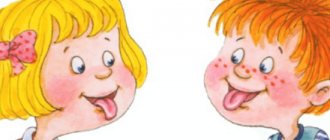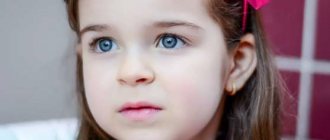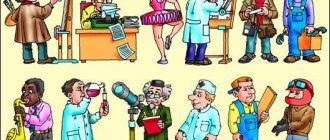Speech therapy is the science of speech disorders, methods of preventing, identifying and eliminating them through education and special training. Speech therapy studies the causes, mechanisms, symptoms, course, structure of speech disorders and the system of corrective influence.
At the Yusupov Hospital, speech therapists restore impaired speech functions using innovative techniques.
Principles and visual methods of speech therapy
When to contact a speech therapist? Adults need speech therapy rehabilitation after a stroke, traumatic brain injury, or brain tumors. Children need consultation with a speech therapist in the following cases:
- a child of one and a half to two years old does not pronounce the words “mom”, “dad”, “top-top”;
- the baby is silent until the age of three, although he understands speech addressed to him;
- the child is lagging behind in speech development;
- after traumatic brain injury;
- By the age of five, a child nasals, burrs, lisps, and pronounces sounds incorrectly;
- baby at five, the child doesn’t remember words well.
From the age of three, children are recommended to undergo an annual consultation with a speech therapist, even if their parents think that everything is fine. Intensive development of the cerebral cortex in children continues until the age of 6-7 years. It is better to deal with speech therapy problems before school, and it is worth starting early.
What is the difference between a speech therapist and a speech pathologist? A defectologist has a specialization in “defectology”. He works with children with physical and mental disabilities. A speech therapist works with children without mental retardation or disruption of the central nervous system. He teaches the correct pronunciation of sounds and syllables. The tasks of a speech therapist at school are the correction and prevention of reading and writing disorders.
Speech therapy is based on the following basic principles:
- consistency;
- complexity;
- development principle;
- consideration of speech disorders in relation to other aspects of the child’s mental development;
- the principle of taking into account the causes and mechanisms of speech defects.
Speech therapy methods are conventionally divided into several groups:
- organizational – comparative, longitudinal (study over time), complex;
- empirical – observation, experimental, psychodiagnostic (tests, questionnaires, interviews), biographical (collection and analysis of the patient’s life history);
- quantitative and qualitative analysis of the obtained data, their machine processing using electronic computers and computer programs;
- interpretative – methods of theoretical study of connections between the phenomena being studied.
Technical means that ensure the objectivity of the study are widely used: intonographs, nasometers, spectrographs, video speech, phonographs, spirometers and other modern equipment. X-ray film photography, cinematography, electromyography, glottography make it possible to study the dynamics of holistic speech activity and its individual components. Neurological problems are also studied in speech therapy.
CHAPTER 5. PRINCIPLES AND METHODS OF Speech Therapy
Many speech disorders manifest themselves in the structure of various mental and neuropsychological disorders. Speech disorders in most cases are a syndrome in the structure of which there are complex and ambiguous connections between speech and non-speech symptoms. This determines the need for a complex (medical-psychological-pedagogical) impact, i.e., impact on the entire syndrome as a whole, taking into account the nature of the interaction between individual speech and non-speech symptoms and groups of symptoms.
For example, alalia occurs as a result of selective organic damage to the brain and is manifested by a whole complex of symptoms, speech and non-speech. Speech symptoms of alalia are expressed in difficulties in mastering language patterns and their incorrect use, in agrammatisms, distortions of the sound-syllable structure of a word, impaired sound pronunciation, etc. With motor alalia, neurological symptoms are observed, features of cognitive activity and other mental processes, and deviations in personality formation are manifested. Therefore, when eliminating alalia, a complex effect is necessary.
Stuttering also represents a complex symptom complex of dysontogenesis, in which both motor and mental symptoms are observed. This determines an integrated approach to eliminating stuttering, including therapeutic and recreational work, psychotherapy, work on speech, influence on the social environment, etc.
Complex medical, psychological and pedagogical intervention is very important in eliminating all complex speech disorders, but it is especially significant in eliminating dysarthria, stuttering, alalia, and aphasia.
The system of speech therapy work to eliminate various forms of speech disorders is differentiated, taking into account many factors that determine it. A differentiated approach is carried out based on taking into account the etiology, mechanisms, symptoms of the disorder, the structure of the speech defect, the age and individual characteristics of the child. In the process of correcting speech disorders, general and specific patterns of development of abnormal children are taken into account.
Speech therapy work on the correction of speech disorders in various categories of abnormal children (mentally retarded, with mental retardation, with cerebral palsy, hearing impaired, visually impaired, blind, etc.) has its own specifics, due to the characteristics of their sensorimotor and mental development. In the process of speech therapy, it is necessary to take into account the level of development of speech, cognitive activity, features of the child’s sensory sphere and motor skills.
Speech therapy intervention is a purposeful, complexly organized process in which various stages are distinguished. Each of them is characterized by its own goals, objectives, methods and techniques of correction. The prerequisites for the transition from one stage to another are consistently formed. For example, work to eliminate dyslalia includes the following stages: production, automation, differentiation of sounds.
The speech therapist uses specific methods and techniques to ensure that the child pronounces the sound correctly and automates it. The main task is to consolidate the skill of correct pronunciation in the process of verbal communication. Differentiation of sounds is necessary in cases where sounds are replaced or mixed.
Speech therapy intervention is based on the ontogenetic principle, taking into account the patterns and sequence of formation of various forms and functions of speech.
So, in cases where a child has a large number of disturbed sounds, for example, whistling, hissing, r,
the sequence in work is determined by the sequence of their appearance in ontogenesis (whistling, hissing,
p).
In the process of forming the syntax of oral speech during alalia, the sequence of appearance of various types of sentences in ontogenesis is taken into account.
The formation of correct speech skills, forms and functions of speech is also carried out in ontogenesis, from simple to complex, from concrete to more abstract, from productive forms to unproductive, from situational speech to contextual, from the assimilation of semantic relations to the assimilation of formal features of speech (language) units .
A large place in speech therapy work is occupied by the correction and education of the personality as a whole; the peculiarities of personality formation in children with various forms of speech disorders, as well as age-related characteristics, are taken into account.
Of particular importance is taking into account personal characteristics when correcting speech disorders associated with brain disorders (alalia, aphasia, stuttering, dysarthria). In this case, the symptoms of the disorder show pronounced features of personality formation, which are both primary in nature, caused by organic damage to the brain, and the nature of secondary layers.
Thus, children who stutter experience disharmonious personality development, uneven development of its individual aspects, and disruption of interpersonal relationships.
The impact on a child with a speech disorder is associated with the normalization of social contacts with surrounding people.
Correction of speech disorders is carried out taking into account leading activities. In preschool children, it is carried out in the process of play activity, which becomes a means of developing analytical-synthetic activity, motor skills, sensory sphere, enriching the vocabulary, mastering language patterns, and shaping the child’s personality.
At school age, the leading activity is educational, which becomes the basis of correctional and speech therapy work in eliminating speech disorders in children of this age.
In the process of overcoming alalia and aphasia, the creation of new functional systems based on preserved links is of great importance.
During the formation of higher mental functions (including speech), various afferentations and analyzers take part in the process of ontogenesis. At the beginning of its formation, the function is multireceptor; it is based on a complex of different types of afferentation. Thus, the process of sound discrimination in early ontogenesis is carried out with the participation of auditory, visual, and kinesthetic afferentation. Later in the process of sound discrimination, the acoustic one becomes the leading one.
In speech therapy work, when auditory differentiation is impaired, reliance is placed on intact links.
For example, the restoration of sound discrimination in sensory aphasia is carried out as if bypassing the affected acoustic component of sound differentiation, relying on visual (oral image of sound) and kinesthetic afferentation (kinesthetic signals received during articulation).
Taking into account the child’s leading activity in the process of speech therapy work, various situations of speech communication are modeled. To consolidate correct speech skills in conditions of natural speech communication, close communication in the work of a speech therapist, teacher, educator, and family is necessary. The speech therapist informs teachers and parents about the nature of the child’s speech disorder, about the tasks, methods and techniques of work at this stage of correction, and strives to consolidate correct speech skills not only in the speech therapy room, but also in lessons, during extracurricular hours under the control of teachers and parents.
When eliminating speech disorders, the leading approach is speech therapy, the main forms of which are education, training, correction, compensation, adaptation, rehabilitation.
Speech therapy is carried out using various methods. The teaching method in pedagogy is considered as a way of joint activity between the teacher and children, aimed at children mastering knowledge, skills and abilities, at developing mental abilities, cultivating feelings, behavior and personal qualities.
There are various classifications of teaching methods. In speech therapy work, various methods are used: practical, visual and verbal. The choice and use of one or another method is determined by the nature of the speech disorder, the content, goals and objectives of correctional speech therapy, the stage of work, the age, individual psychological characteristics of the child, etc. At each stage of speech therapy work, the effectiveness of mastering correct speech skills is ensured by the corresponding group of methods . Thus, the stage of sound production is characterized by the predominant use of practical and visual methods; during automation, especially in connected speech, conversation, retelling, story, i.e., verbal methods are widely used.
When eliminating alalia, practical and visual methods are also used to develop the sensory sphere, motor skills, and cognitive activity of the child. At the same time, when consolidating the correct skills of grammatical forms of inflection and word formation, along with visual methods, verbal ones are also used.
When eliminating stuttering in preschool age, the effectiveness of speech therapy work is achieved by practical and visual methods. Starting from school age, verbal methods combined with visual ones are predominantly used in eliminating stuttering.
Practical methods of speech therapy include game exercises and modeling.
Exercise is the child’s repeated repetition of practical and mental actions. In speech therapy work, they are effective in eliminating articulatory and voice disorders, since children develop practical speech skills or the prerequisites for their development, and master various methods of practical and mental activity. As a result of systematically performing articulatory exercises, the prerequisites are created for sound production and for its correct pronunciation. At the stage of sound production, the skill of its isolated pronunciation is formed, and at the automation stage, the correct pronunciation of sound in words, phrases, sentences, and coherent speech is achieved.
Mastering correct language skills is a long-term process that requires a variety of systematically used activities.
Exercises are divided into imitative-performing, constructive and creative.
Imitative-performing tasks are performed by children in accordance with the model. In speech therapy work, a large place is occupied by practical exercises (breathing, vocal, articulatory, developing general, manual motor skills). At the initial stages of assimilation, demonstration of actions is used, and during repetitions, as the method of action is mastered, the visual demonstration is increasingly “collapsed” and replaced by verbal designation. Thus, the implementation of articulatory exercises is initially carried out according to a visual demonstration, based on the visual perception of the tasks performed by the speech therapist; in the future they are only called.
In speech therapy work, various types of construction are used. For example, when eliminating optical dysgraphia, children are taught to construct letters from elements, from one letter to another.
Creative exercises involve the use of learned methods in new conditions, on new speech material. Thus, during the formation of sound analysis and synthesis, the definition of the sequence of sounds is first given with the support of auxiliary means, and then only in speech terms, since the assimilation of the action of sound analysis is transferred to new conditions. And finally, the action of sound analysis is considered formed if it can be performed internally (the child independently comes up with words with a certain sound, number of sounds, selects pictures whose names contain sounds, etc.).
Speech exercises are also used in speech therapy work. An example of this is the repetition of words with added sounds when correcting problems with sound pronunciation.
The use of play exercises (for example, imitation of actions: cutting wood, trees swaying in the wind, imitation of the gait of a bear, fox) causes an emotionally positive mood in children and relieves their stress.
Performing any exercises contributes to the formation of practical skills only if the following conditions are met:
the child's awareness of the goal. This depends on the clarity of the task, the use of the correct demonstration of methods of execution, the disaggregation of the demonstration of complex exercises, taking into account the age and mental characteristics of the child; systematicity, which is realized in repeated repetition (in speech therapy classes, outside of them, in class, during extracurricular time using a variety of speech and didactic material and various situations of speech communication); gradual complication of conditions, taking into account the stage of correction of the age and individual psychological characteristics of the child; conscious implementation of practical and verbal actions; independent performance at the final stage of correction (although at the initial stages of correction, exercises can be performed with the help of a speech therapist, with mechanical assistance, etc.); differentiated analysis and assessment of implementation.
The gaming method involves the use of various components of gaming activity in combination with other techniques: demonstration, explanation, instructions, questions. One of the main components of the method is an imaginary situation in expanded form (plot, role, game actions). For example, in the games “Shop”, “Calling a Doctor”, “Nalesnaya Pedestrovka”, children assign roles, use masks, clothing items, verbal and non-verbal actions to create images of people or animals, and, in accordance with the role, enter into certain relationships during the game.
In the game method, the leading role belongs to the teacher, who selects the game in accordance with the intended goals and objectives of correction, distributes roles, organizes and activates the activities of children.
Various games are used with preschool children: singing, didactic, active, creative, dramatization. Their use is determined by the tasks and stages of correctional speech therapy work, the nature and structure of the defect, the age and individual mental characteristics of children.
Modeling is the process of creating models and using them to form ideas about the structure of objects, the relationships and connections between the elements of these objects.
The effectiveness of their use depends on the following conditions:
the model must reflect the basic properties of the object and be similar in structure to it;
be accessible to a child of a given age;
should facilitate the process of mastering skills, abilities and knowledge.
Sign-symbolic modeling has become widely used. For example, when forming sound analysis and synthesis, graphic diagrams of the structure of a sentence, the syllabic and sound composition of a word are used.
The use of a model presupposes a certain level of formation of mental operations (analysis, synthesis, comparison, abstraction, generalization).
Visual methods are those forms of assimilation of knowledge, skills and abilities that are significantly dependent on the visual aids and technical teaching aids used in teaching.
The use of manuals facilitates the assimilation of materials and contributes to the formation of sensory prerequisites for the development of speech skills. Reliance on sensory images makes the acquisition of speech skills more specific, accessible, and conscious, and increases the effectiveness of speech therapy work.
Visual methods include observations, looking at drawings, paintings, models, watching filmstrips, films, listening to records, tape recordings, as well as showing a sample task, a method of action, which in some cases act as independent methods.
Observation involves the use of paintings, drawings, articulation profiles, models, as well as showing sound articulation and exercises.
The use of these benefits helps to clarify and expand children's ideas, develop cognitive activity, and creates a favorable emotional background for speech therapy work.
Visual aids should:
be clearly visible to everyone; selected taking into account the age and individual psychological characteristics of the child; meet the objectives of speech therapy work at this stage of correction; be accompanied by precise and specific speech; a verbal description of an object should contribute to the development of analytical-synthetic activity, observation, and speech development.
The use of manuals can pursue various goals: correction of sensory disturbances (ideas about color, shape, size, etc.), development of phonemic perception (in a picture, find objects whose names contain the sound being practiced), development of sound analysis and synthesis (find objects in a story picture, the name of which has 5 sounds), consolidation of the correct pronunciation of sounds, development of vocabulary, grammatical structure, coherent speech (composing a story based on a story picture, a series of story pictures).
Playback of tape recordings and recordings on records is accompanied by a speech therapist’s conversation and retelling. Tape recordings of the speech of the children themselves are used for analysis, to identify the nature of the disorder, to compare speech at various stages of correction, and to instill confidence in the success of the work.
Filmstrips and films are used to automate speech sounds during a conversation when retelling the content, to develop the skills of continuous, smooth speech when eliminating stuttering, and to develop coherent speech.
Features of the use of verbal methods in speech therapy work are determined by the age characteristics of the children, the structure and nature of the speech defect, goals, objectives, and the stage of correctional intervention.
When working with preschool children, verbal methods are combined with practical visual ones. When eliminating dyslalia, stuttering and other speech disorders in preschool age, the speech therapist relies on the use of playful and visual methods with the inclusion of verbal ones.
At school age, it is possible to use only verbal methods without supporting them with visual and practical ones. For example, when eliminating stuttering in children of senior school age, conversations about books read, memorization of poems, retelling of what they read, stories from personal experience, and discussions are used.
The main verbal methods are story, conversation, reading.
A story is a form of teaching in which the presentation is descriptive. It is used to create in children an idea of a particular phenomenon, to evoke positive emotions, to create a model of correct expressive speech, to prepare children for subsequent independent work, to enrich their vocabulary, and to consolidate grammatical forms of speech.
The story involves influencing the child’s thinking, imagination, feelings, and encourages verbal communication and exchange of impressions. It is advisable to accompany the story with a demonstration of a series of plot pictures (especially in preschool age). Before playing the text, you can have a short preliminary conversation that will prepare children for its perception. After the story, a conversation, exchange of impressions, retelling, and dramatization games are held, depending on the tasks of speech therapy work.
In addition to the story, retelling of fairy tales and literary works is used (short, selective, extended, etc.).
Depending on the didactic tasks, preliminary, final, generalizing conversations are organized. During the preliminary conversation, the speech therapist identifies the children’s knowledge and creates a mindset for mastering a new topic. For example, when differentiating sounds ts
— in the preliminary conversation, the sound
s is highlighted,
then
c,
their articulation is clarified based on the children’s experience. Then the sounds are compared and the existing knowledge is generalized. The final conversation is conducted to consolidate and differentiate speech skills.
Based on analysis, synthesis, comparison, generalization, the essential properties of speech and its elements are isolated.
In the inductive form of conversation, facts are first reproduced, analyzed, compared, and then generalized (from particular to general). In the deductive form, a generalization is first given, and then specific facts are found to confirm it.
The use of conversation in speech therapy work must meet the following conditions:
rely on a sufficient amount of ideas, the level of speech skills, and be in the child’s zone of proximal development;
correspond to the logic of the child’s mental activity, take into account the peculiarities of his thinking;
activate children’s mental activity using a variety of techniques, including leading questions;
questions should be clear, precise, requiring an unambiguous answer;
the nature of the conversation must correspond to the goals and objectives of correctional work.
When conducting a conversation, various tasks are set: developing cognitive activity, consolidating correct pronunciation, clarifying the grammatical structure of sentences, consolidating the skills of smooth continuous speech, etc.
In the process of speech therapy, a variety of verbal techniques are also used: showing a sample, explaining, explaining, pedagogical assessment.
Explanation and explanation are included through visual and practical methods. For example, when producing sound, along with the demonstration, the speech therapist uses an explanation of its correct articulation, pays attention to the position of the tongue and lips, and accompanies the demonstration with explanations.
Of great importance in speech therapy work is the pedagogical assessment of the result of completing a task, the method and progress of its implementation. It helps improve the quality of the correction process, stimulates and activates the child’s activity, and helps the formation of self-control and self-esteem.
When assessing a child’s activity, it is necessary to take into account his age and individual psychological characteristics. Unconfident, shy, and acutely aware of their defects should be more often encouraged to show pedagogical tact when assessing their work.
Speech therapy intervention is carried out in the following forms of training: frontal, subgroup, individual lesson, lesson.
According to the nature of their focus, methods of speech therapy work are divided into methods of “direct influence” (for example, influencing articulatory motor skills when eliminating dyslalia) and methods of “bypass paths” (for example, creating new functional connections bypassing the damaged parts of the speech functional system in aphasia).
Conclusions and problems
An urgent problem in speech therapy work is to find ways to increase its effectiveness. The high plasticity of the central nervous system, the social essence of speech, the choice of the right means, methods and other factors determine the generally favorable prospects for the process of eliminating speech disorders.
The effectiveness of speech therapy is determined by the following factors:
• the level of development of speech therapy as a science;
• connection between theory and practice;
• the nature of the defect and the severity of the symptoms of the disorder;
• the age of the person, his state of health;
• mental characteristics of a person, his activity in the process of eliminating speech disorders;
• timing of the start of speech therapy work and its duration;
• implementation of the basic principles of correctional and speech therapy work, especially the principle of complex influence;
• skill and personal qualities of a speech therapist. Further development of the principles and methods of speech therapy will increase its effectiveness. With the development of speech therapy as a science and the development of the system of special institutions, the relevance of the development of specific methods and general principles of speech therapy influence increases.
Test questions and assignments
1. Expand the content of the special principles of speech therapy work.
2. What factors determine the choice of speech therapy methods?
3. Describe the features of using practical teaching methods in speech therapy work.
4. Characterize and reveal the features of using visual teaching methods in speech therapy work.
5. Determine verbal forms of teaching and their features in correctional speech therapy work.
6. While present at a lesson or speech therapy session, determine what methods were used when working on children’s speech.
Literature
1. Becker K.P., Sovak M. Speech therapy. - M., 1981.
2. Pravdiva O.V. Speech therapy. - M., 1973.
3. Khvattsev M. E. Speech therapy. - M., 1959.
4. Reader on speech therapy / Ed. L.S. Volkova, V.I. Seliverstova - M., 1997. - Part I, II.
⇐ Previous7Next ⇒
Recommended pages:
Classification of general speech underdevelopment in speech therapy
In terms of clinical composition, the category of children with general speech underdevelopment is heterogeneous. Speech therapists distinguish the following forms of pathology:
- uncomplicated forms of general speech underdevelopment in children with minimal disorders of brain function - insufficient regulation of muscle tone, immaturity of the emotional-volitional sphere, motor differentiation);
- complicated forms of OHP in children with psychopathic and neurological syndromes - cerebrasthenic, convulsive, hypertensive-hydrocephalic, hyperdynamic;
- gross underdevelopment of speech in children with organic lesions of the speech parts of the brain (with motor alalia - the absence or underdevelopment of speech in children with normal hearing and initially intact intelligence).
The following classification of speech disorders in speech therapy is currently used:
- the first level of speech development is “speechless children” who lack common speech;
- the second level of speech development - the initial elements of common speech, a poor vocabulary, and the phenomena of agrammatism are determined - speech disorders manifested in difficulties in generating or perceiving sentences;
- the third level of speech development is the appearance of expanded phrasal speech with underdevelopment of its semantic and sound aspects;
- the fourth level of speech development – residual gaps in the development of the lexical-grammatical and phonetic-phonemic aspects of speech.






